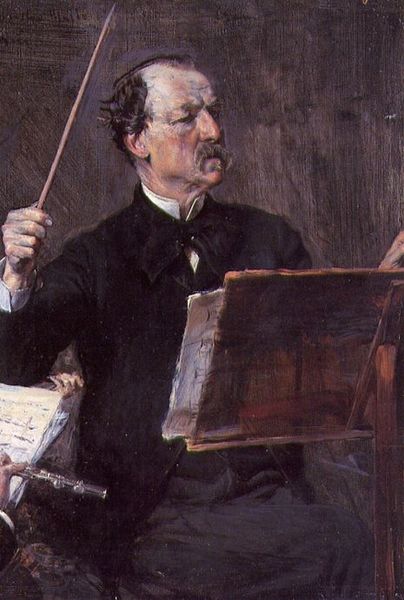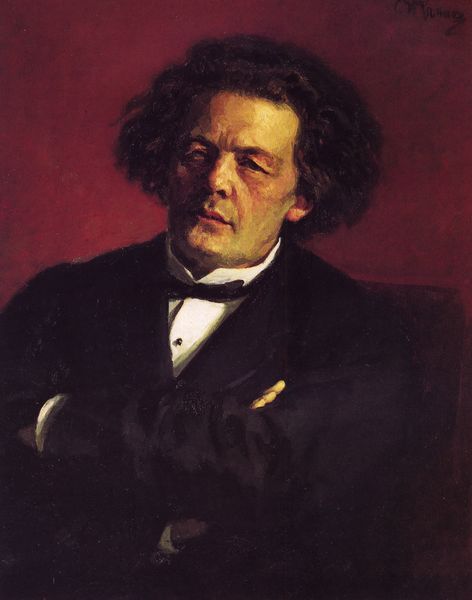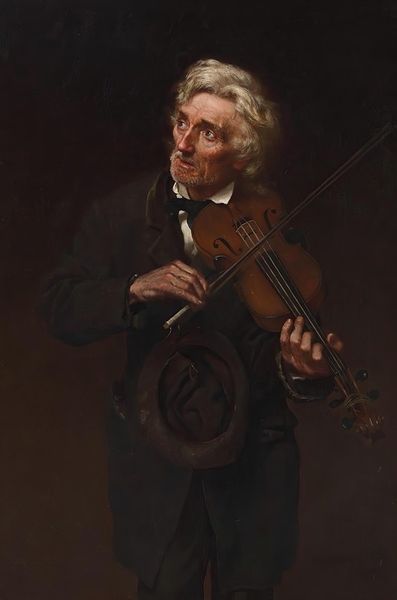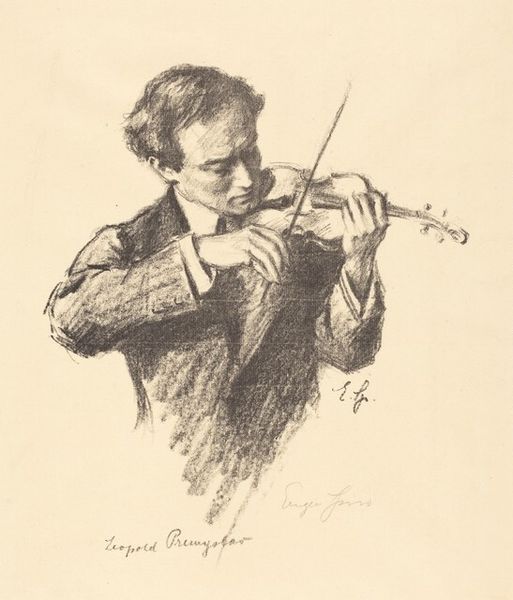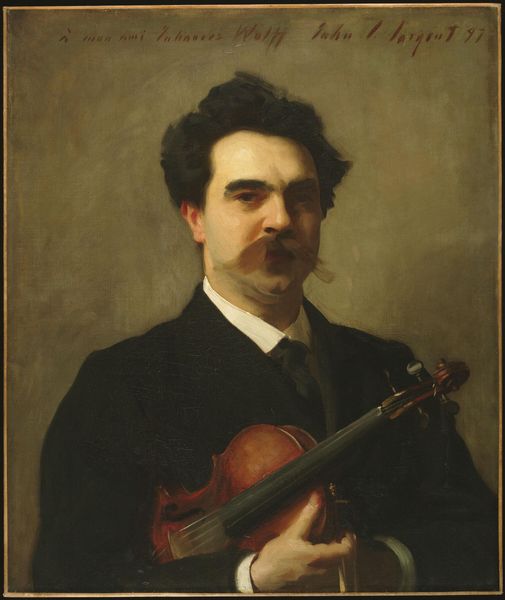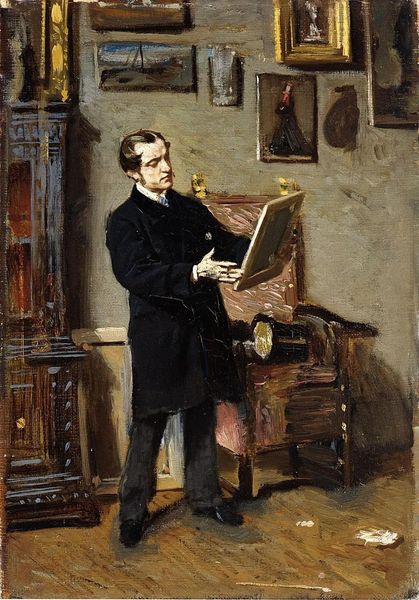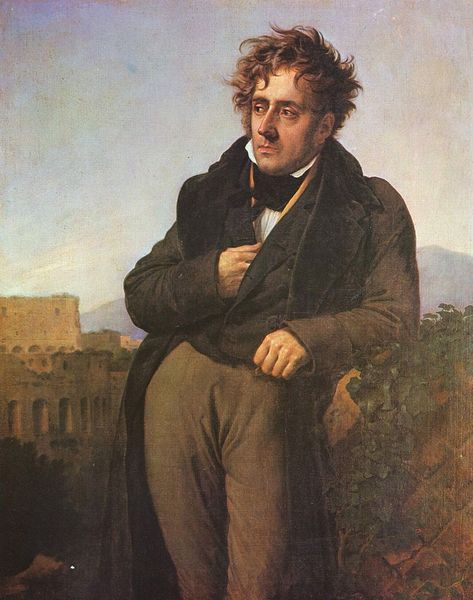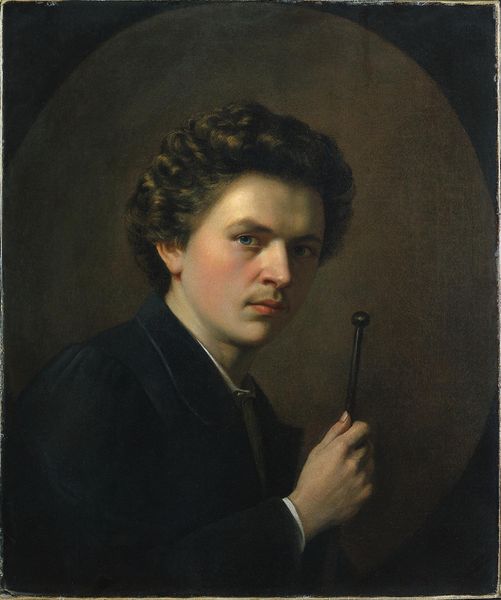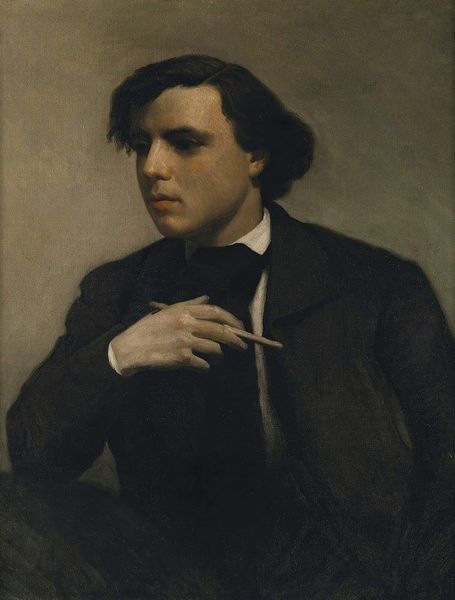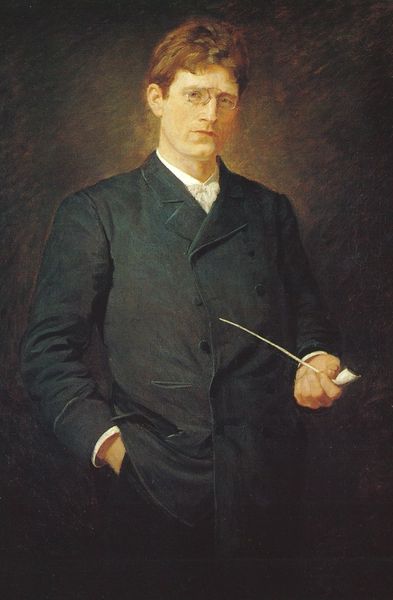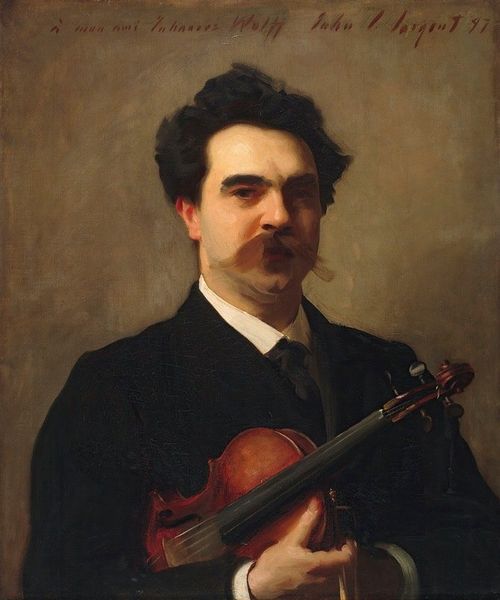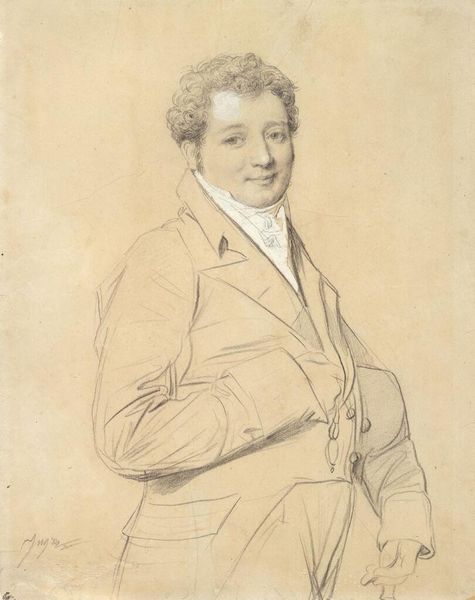
Copyright: Public domain
Curator: Right, so we're looking at Ilya Repin's 1887 portrait of Anton Rubinstein. Oil on canvas, fairly large piece, and instantly I feel the energy. He's caught mid-conduct, isn’t he? A burst of creative command, even if slightly distracted. Editor: Absolutely. Rubinstein's pose captures the Romantic ideal of the composer as virtuoso, in complete command of his orchestra. However, paintings like this served an important purpose: to solidify the reputation of important figures within a specific cultural milieu and to preserve a particular historical narrative. The choice of pose, clothing, and even the colors are carefully considered to project authority and artistic genius. Curator: And those colors… I find myself thinking about the muted greens and the intense black of his tailcoat, contrasting with that stark white collar. It’s almost theatrical, setting him apart. Does that separation speak to something specific? Editor: In terms of societal impact, images like these played a pivotal role in creating public "icons." This wasn’t simply about honoring Rubinstein's talent; it was also about affirming the cultural importance of Russian art and music within the European context. Curator: That’s an interesting point! Because, beyond the socio-political aspect, I'm really struck by how Repin seems to capture the *essence* of the composer here, perhaps his very soul through brushstrokes. It's like seeing the music made visible. The loose, almost impressionistic touches, feel alive with musicality and inspiration. Or maybe that’s me being swept away by the myth of the romantic maestro? Editor: Not at all. This image helped *construct* that myth. Repin, through his artistic choices, reinforces pre-existing societal expectations surrounding genius, celebrity, and class. Remember, such images are instruments of power, not passive recordings of reality. Curator: Ah, so, brushstrokes as political gestures. I suppose there’s something deeply evocative in understanding portraiture this way. Now, when I gaze at Rubinstein, baton in hand, lost in the act of music creation, I see power and public image at work, too. Thank you, as always, for the historical counterpoint! Editor: And I think you reminded us that beneath the social significance of paintings lies an authentic individual whose essence an artist has captured. So thanks!
Comments
No comments
Be the first to comment and join the conversation on the ultimate creative platform.
